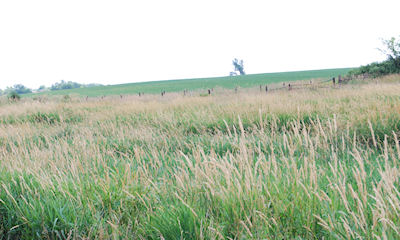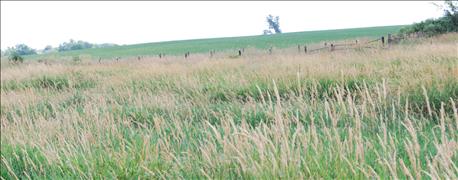August 11, 2015

FAQ: USDA recently announced an additional 800,000 acres of highly environmentally sensitive land can be enrolled in the Conservation Reserve Program under wetland and wildlife initiatives that provide multiple benefits on the same land. When will this next general CRP sign-up be held?

30 YEARS OF CRP: U.S. Ag Secretary Tom Vilsack praises the Conservation Reserve Program which is marking its 30th anniversary of preserving environmentally sensitive land.
Answer: U.S. Secretary of Agriculture Tom Vilsack says USDA will accept new offers to participate in CRP under a general signup to be held Dec. 1, 2015 through Feb. 26, 2016. Eligible existing program participants with contracts expiring Sept. 30, 2015, will be granted an option for one-year extensions. Farmers interested in removing sensitive land from crop production, and planting grasses or trees to reduce soil erosion on that land, and to improve water quality and restore wildlife habitat, are encouraged to enroll.
Secretary applauds CRP program's 30th anniversary
"For 30 years, the CRP program has supported farmers and ranchers as they continue to be good stewards of land and water," said Vilsack. "The CRP has helped them prevent more than 8 billion tons of soil from eroding, reduce nitrogen and phosphorous runoff relative to cropland by 95% and 85% respectively, and sequester 43 million tons of greenhouse gases annually, which is equal to taking 8 million cars off the road. This has been one of the most successful conservation programs in the history of the country, and this announcement that we will hold an upcoming general CRP sign-up period keeps that momentum moving forward."
The voluntary CRP program allows USDA to contract with ag producers so environmentally sensitive land is conserved. Participants establish long-term, resource-conserving plant species to control soil erosion, improve water quality and develop wildlife habitat. In return, USDA's Farm Service Agency provides participants with rental payments and cost-share assistance. Contract duration is between 10 and 15 years.
CRP protects water quality, restores wildlife habitat
"CRP protects water quality and restores significant habitat for ducks, pheasants, turkey, quail, deer and other important wildlife. That spurs economic development like hunting and fishing, outdoor recreation and tourism all over rural America," said Vilsack. "Today we're allowing an additional 800,000 acres for duck nesting habitat and other wetland and wildlife habitat initiatives to be enrolled in the program."
In addition to Ducks Unlimited's partnership with the USDA's Conservation Reserve Program, other longtime partners include Pheasants Forever, Quail Forever, Association of Fish and Wildlife Agencies, National Association of State Foresters, National Wild Turkey Federation, Audubon Society, National Bobwhite Technical Committee, Quality Deer Management Association, National Rural Water Association, Playa Lakes Joint Venture, Longleaf Alliance, state soil and water conservation districts, and state forestry, ag and natural resource agencies.
Farmers, landowners can target specific concerns
"I encourage all farmers and ranchers to consider the various CRP continuous sign-up initiatives that may help target specific resource concerns," said Vilsack. "Financial assistance is offered for many practices including conservation buffers and pollinator habitat plantings, and initiatives such as the highly erodible lands, bottomland hardwood tree and longleaf pine, all of which are extremely important."
Farmers and ranchers are urged to visit their FSA county office for more information. The 2014 Farm Bill authorized enrollment of grasslands in CRP and information on grasslands enrollment will be available after the regulation is published later this summer. The CRP was re-authorized by the 2014 Farm Bill. For more information, visit usda.gov/farmbill. For more information about CRP, visit fsa.usda.gov/conservation, or contact your local USDA Farm Service Agency office. To find your local FSA office, visit offices.usda.gov.
You May Also Like




